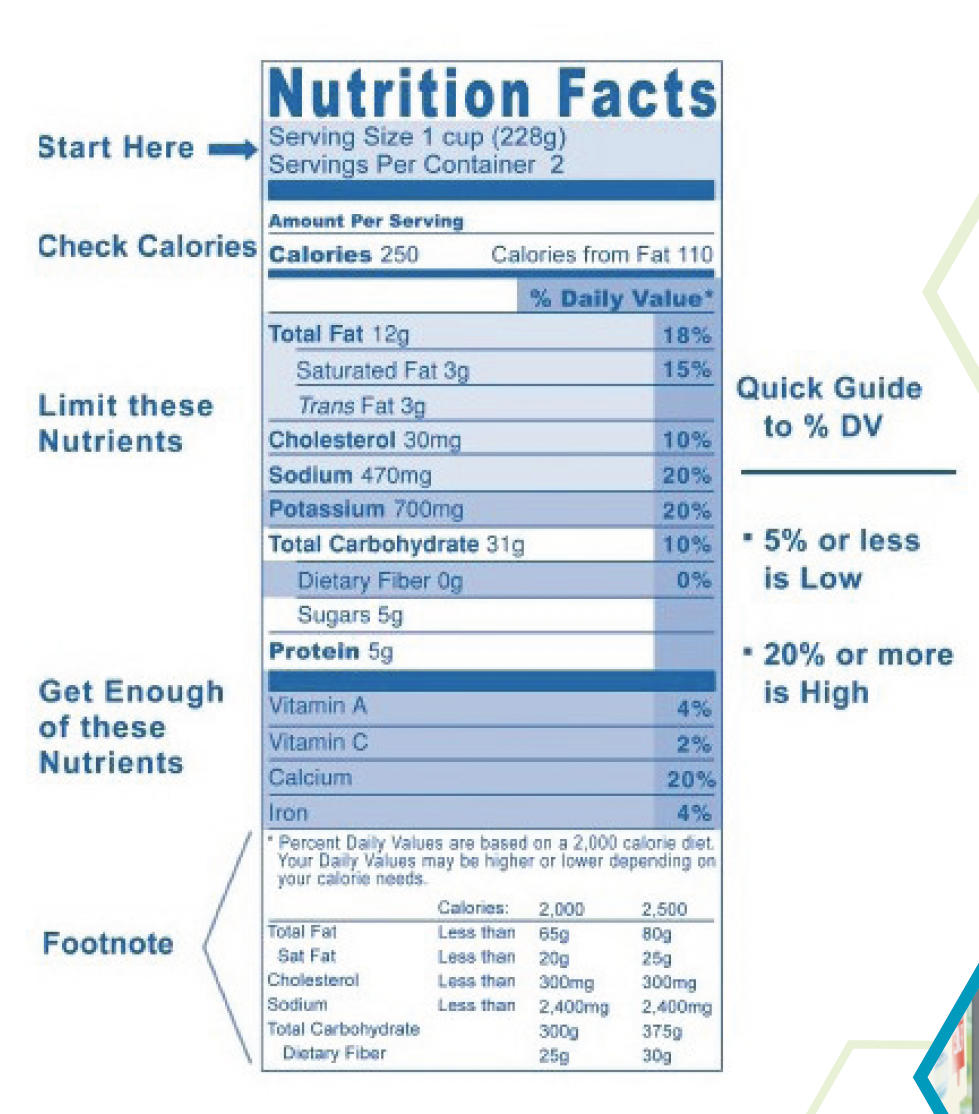Read Your Way to a Healthier Life
DONNA JANDA
Some of us go our whole lives without ever reading food labels, others swear by them. Yet, there are some of us who would love to read food labels, but we have no idea what all those numbers mean or how they impact our health or well-being.
This is all fine, until there is a health crisis, such as diabetes, at which point, reading and understanding these labels can be critical.

To break down the mystery of the food label, we have to look at the ingredients list, serving sizes, and most importantly, try your best to ignore all the fancy descriptions on the front of the package.
The ingredients are listed in order of highest quantity. This means that the first ingredient on the list has the most content, and the last ingredient, has the least amount of content. This seems simple enough until you see dextrose, fructose, galactose, glucose, lactose, maltose, sucrose…all of which are sugar in its various forms. There are over 50 other names for sugar that the unsuspecting consumer may not be aware of, not including the hidden sugars in fruits or ingredients, such as coconuts, so if you are diabetic, read your labels very carefully.
Whether you are diabetic or not, it is important that you pay special attention to the serving sizes, as they are generally smaller than what we consume in a sitting. For example, a can of soda or a bag of chips may contain two or more servings. Can you really imagine leaving half a can of soda for another day?
What about cereal, a trusty, quick fix breakfast when you don’t have time to make some porridge? Did you know that the average cereal bowl holds approximately two cups of cereal, however, the average cereal serving size is only 3/4 of a cup? This means that when your favourite granola says it contains 200 calories and 30% of your daily intake of saturated fats, you may actually be consuming 520 calories and 78% of your daily intake of saturated fat, and that’s all before you have even walked out the door.
Also, please do not sit down and eat that one container of ice-cream by yourself. One container is not meant for one sitting. Pace yourself and thank me later.
Mark Simms, Certified Holistic Nutritional Practitioner (CNP), #thatwholisticguy, suggests that if you are diabetic, you should increase your fiber consumption. Simms also states that when eating fruits, size does indeed matter. You should eat small fruits or cut and weigh them so that you are only consuming approximately 15g of fruit. And what about food combinations? Well, if you eat food with protein and/ or healthy fats, that is a bonus to keep your blood sugar balanced.
If in doubt, foods without labels, such as fruits, vegetables, and legumes, are always the healthier choice. However, when you start your journey to a healthier lifestyle, please ensure that you consult your doctor or health practitioner to get that extra support and guidance.
And remember, you don’t have to be financially rich to lead a rich and fulfilling life. The battle is won at the grocery store. Knowledge is power, and your health is in your hands…and on your plate.

